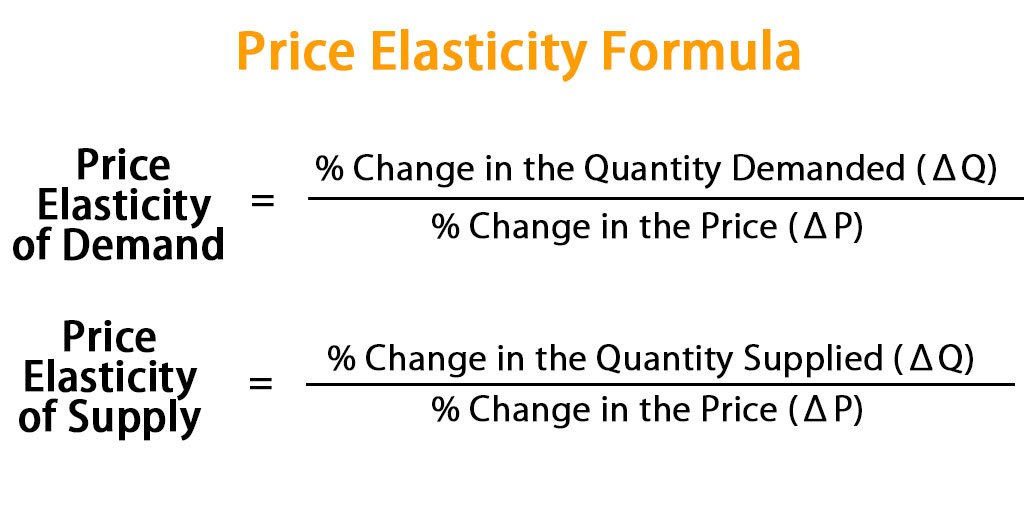When it comes to marketing and pricing decisions, understanding the concepts of price elasticity, pricing strategies, and pricing models is crucial. This knowledge helps businesses set prices that maximize revenue, profit, and market share. This comprehensive guide will delve into these concepts, their significance, and their application in marketing.
1. Price Elasticity of Demand (PED)

Price elasticity of demand (PED) measures how the quantity demanded of a product changes in response to a change in its price. It indicates the sensitivity of consumers to price changes and is a key concept in economics and marketing.
- Formula for Price Elasticity of Demand (PED):
\text{PED} = \frac{\% \text{ Change in Quantity Demanded}}{\% \text{ Change in Price}}
] - Types of Price Elasticity:
- Elastic Demand (PED > 1): Small price changes result in large changes in quantity demanded. Common for non-essential goods.
- Inelastic Demand (PED < 1): Price changes result in small changes in quantity demanded. Often applies to essential goods.
- Unitary Elastic Demand (PED = 1): Percentage change in price is equal to the percentage change in quantity demanded.
- Perfectly Elastic (PED = ∞): Consumers will only buy at one price.
- Perfectly Inelastic (PED = 0): Quantity demanded does not change with price changes.
- Factors Influencing Price Elasticity:
- Availability of Substitutes: More substitutes increase elasticity.
- Necessity vs. Luxury: Necessities are less elastic, while luxury goods are more elastic.
- Proportion of Income: Higher-cost items relative to income tend to be more elastic.
- Time Horizon: Demand is more elastic over the long term.
2. Pricing Strategies in Marketing
Pricing strategies involve setting prices based on market research, consumer behavior, competitor analysis, and business objectives. The right strategy can help a business achieve its revenue, profit, and market share goals.
- Common Pricing Strategies:
- Cost-Plus Pricing: Adds a markup to the cost of goods sold. Simple and ensures a profit margin.
- Competitive Pricing: Sets prices based on competitors. Useful in highly competitive markets.
- Penetration Pricing: Introduces products at a low price to gain market share quickly. Used when entering new markets.
- Price Skimming: Sets a high price initially and lowers it over time. Targets early adopters willing to pay a premium.
- Value-Based Pricing: Prices are based on the perceived value to the customer rather than the cost. Often used for unique or differentiated products.
- Dynamic Pricing: Adjusts prices based on real-time supply and demand data. Common in e-commerce and the airline industry.
- Psychological Pricing: Uses pricing that makes products appear cheaper, such as $9.99 instead of $10. Influences customer perception.
- Freemium Pricing: Offers basic services for free while charging for premium features. Common in software and digital services.
3. Pricing Models in Marketing
Pricing models are frameworks that businesses use to set and adjust prices for their products or services. These models help to align pricing strategies with the business’s overall marketing goals.
- Types of Pricing Models:
- Subscription Model: Customers pay a recurring fee for access to a product or service. Examples include Netflix and SaaS companies.
- Pay-Per-Use Model: Customers are charged based on the amount they use a product or service. Used by utilities and cloud service providers.
- Bundling Model: Products or services are sold together at a discounted price. Common in telecommunications and software.
- Tiered Pricing Model: Offers different pricing tiers based on features, usage, or service levels. Common in SaaS and telecom.
- Premium Pricing Model: Sets higher prices to create a perception of quality or exclusivity. Common in luxury brands.
- Economy Pricing Model: Offers low prices to attract price-sensitive customers. Common in generic products and discount retailers.
- Auction-Based Pricing: Prices are determined through competitive bidding. Common in real estate, art, and collectibles.
4. Integrating Pricing Strategies and Models with Market Dynamics
Businesses must consider multiple factors when deciding on pricing strategies and models:
- Market Positioning: The business’s position relative to competitors can dictate whether to adopt a premium or economy pricing strategy.
- Target Audience: Understanding the price sensitivity of the target market is crucial for setting prices that maximize demand.
- Cost Structure: A firm’s costs directly affect the pricing model. A cost-plus model may be appropriate where margins are thin.
- Brand Perception: A brand that is perceived as luxurious can adopt a premium pricing model.
- Market Dynamics and Trends: Market conditions, such as economic downturns or booms, can impact price elasticity and demand.
Examples of Elasticity Impact in Pricing and Marketing
Price elasticity of demand (PED) plays a crucial role in pricing strategies and marketing decisions. Understanding how changes in price impact demand can help businesses optimize their pricing, maximize revenue, and respond to market dynamics effectively. Here are some practical examples that illustrate the impact of price elasticity in different industries:
1. Price Elastic Demand Impact Examples
When demand for a product is elastic, small changes in price lead to significant changes in the quantity demanded. This typically applies to non-essential goods or those with many substitutes.
- Example 1: Consumer Electronics (Smartphones)
- Scenario: A smartphone manufacturer like Samsung or Apple decides to lower the price of its latest model by 10%.
- Impact: Due to the availability of many substitutes and competitors in the market, the demand for the smartphone increases significantly, say by 20%. This increase is because consumers perceive a greater value at a lower price and may also switch from competitors’ brands.
- Conclusion: The demand is elastic (PED > 1), and lowering prices can significantly boost sales volume, potentially increasing overall revenue.
- Example 2: Fashion Retail (Clothing)
- Scenario: A fashion retailer reduces the price of its summer collection by 30% at the end of the season to clear inventory.
- Impact: The demand for the discounted clothing items increases sharply by 50%, as fashion is a highly competitive market with many alternatives and price-sensitive customers.
- Conclusion: The demand is highly elastic, and a significant price reduction can lead to a substantial increase in sales, effectively clearing inventory.
2. Inelastic Demand Impact Examples
When demand is inelastic, changes in price have a relatively small effect on the quantity demanded. This is common for essential goods or those with few substitutes.
- Example 3: Pharmaceuticals (Life-saving Medication)
- Scenario: A pharmaceutical company raises the price of a life-saving drug by 15%.
- Impact: Despite the price increase, the quantity demanded only drops by 2% because the drug is a necessity for patients, and there are few or no substitutes.
- Conclusion: The demand is inelastic (PED < 1). Even with higher prices, the reduction in quantity demanded is minimal, allowing the company to increase revenue.
- Example 4: Utilities (Electricity)
- Scenario: An electric utility provider increases its rates by 10% due to rising operational costs.
- Impact: The demand for electricity drops slightly, by only 1%, as it is an essential service and consumers have limited alternatives.
- Conclusion: The demand for electricity is highly inelastic. Price increases result in higher revenue with minimal impact on demand.
3. Unitary Elasticity Impact Example
When demand is unitary elastic, the percentage change in quantity demanded is exactly equal to the percentage change in price.
- Example 5: Mid-Range Restaurant Pricing
- Scenario: A mid-range restaurant increases the price of its main dishes by 5%.
- Impact: The number of customers decreases by 5%, leading to no net change in total revenue.
- Conclusion: The demand is unitary elastic (PED = 1). The restaurant may need to rethink its pricing strategy to avoid losing customers without any benefit in revenue.
4. Perfectly Elastic Demand Impact Example
When demand is perfectly elastic, consumers are extremely sensitive to price changes. Any increase in price will cause demand to drop to zero.
- Example 6: Commodities in a Competitive Market (Wheat)
- Scenario: A wheat farmer raises the price of wheat by 1% above the market price.
- Impact: All buyers switch to competitors with lower prices, and the quantity demanded for this farmer’s wheat drops to zero.
- Conclusion: The demand is perfectly elastic (PED = ∞). The farmer cannot raise prices without losing all customers. Prices must align with the prevailing market price.
5. Perfectly Inelastic Demand Impact Example
When demand is perfectly inelastic, consumers will buy the same quantity regardless of price.
- Example 7: Rare Collectibles (Antique Art)
- Scenario: A rare piece of art from a renowned artist is auctioned, and the auction house increases the starting bid by 20%.
- Impact: Since the artwork is unique and irreplaceable, the quantity demanded (one buyer) remains the same despite the price increase.
- Conclusion: The demand is perfectly inelastic (PED = 0). The uniqueness of the product ensures that price changes do not affect demand.
6. Real-World Marketing Adjustments Based on Elasticity
- Example 8: E-Commerce Flash Sales
- Scenario: An online retailer runs a flash sale with a 50% discount on electronics.
- Impact: Because the demand for electronics is elastic due to the availability of substitutes, the sale results in a 70% increase in quantity sold.
- Conclusion: Understanding elasticity helps the retailer plan promotions that significantly boost sales volume.
Key Takeaways:
- Elastic Demand: Price reductions can significantly increase sales volume; applicable to non-essential goods.
- Inelastic Demand: Price increases have minimal impact on demand; applicable to essential goods.
- Unitary Elastic Demand: Price changes do not impact total revenue; requires careful pricing strategy.
- Perfectly Elastic Demand: Prices must match market levels to maintain demand.
- Perfectly Inelastic Demand: Demand remains constant regardless of price; common for unique or essential items.
By understanding these examples and the concept of elasticity, businesses can make more informed decisions on pricing strategies to optimize revenue and market share.
Learn more about Marketing with this link



